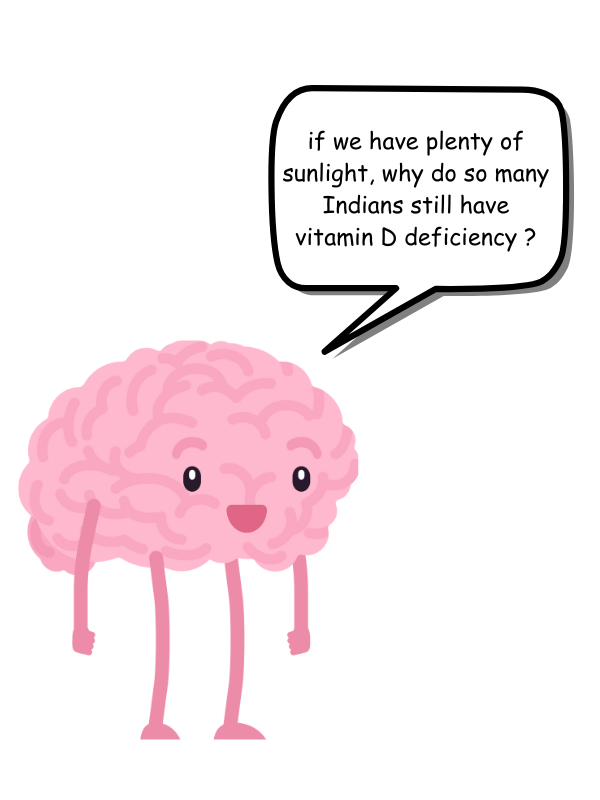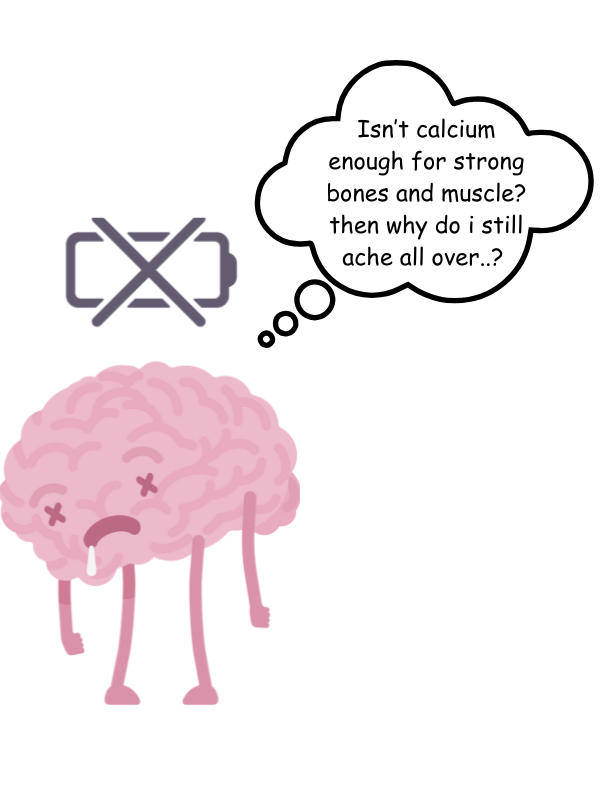The majority of the population struggle with health issues such as fatigue, lethargy, muscle cramps, localized bone pain, etc. Many people might be taking multivitamins, calcium, iron, and minerals for this, but after a few weeks or months, they continue to experience the same problem. Vitamin D is a frequently ignored element that rarely gets checked as part of a routine examination because it is expensive and many individuals are unaware of its significance. According to research and surveys, around 70 – 90% of Indians have been estimated to have a vitamin D insufficiency in some manner. Additionally, up to 25% have a serious vitamin D deficiency. The threshold for each individual to experience the symptoms may vary, but most people present with similar symptoms such as muscle pain, full-body pain, specific bone pain, joint pain, hair loss, mood changes, lethargy, etc. Commonly, these symptoms get confused with other conditions such as thyroid disorders, anemia, arthritis, depression, immunodeficiency, etc.
Vitamin D & Sunlight: The Myth…?
The skin can produce enough vitamin D with the help of sunlight, and it’s the UVB rays that convert the 7-dehydrocholesterol( a cholesterol precursor) beneath the skin into previtamin D3, which gets converted to the active form, 1,25-dihydroxycholecalciferol, by the kidney and the liver. The UVA rays lack the energy sufficient to break the cholesterol bond. The UVB rays are more intense close to the middle of the day, and it is a common myth that vitamin D is produced by early morning or evening sunlight.

Vitamin D production is highest during peak hours of UVB rays, that is, between10 AM and 2 PM and most people spend their time indoors. One of the other predominant factors is skin tone. Dark skin functions as a natural sunscreen, limiting UV radiation. People with darker skin need 3–5 times longer exposure to the sun than fair-skinned people for the same amount of vitamin D production. In addition, wearing full-body clothing and using sunscreen reduces UVB exposure. Air pollution is a hidden cause of why even people in sunny places continue to suffer from this deficiency. Apart from sunlight, the dietary sources include fatty fish, cheese, egg yolks, and cod liver oil. A very small portion of vitamin D is obtained from these food sources. But the likelihood of obtaining adequate vitamin D from dietary sources remains low, as the vast majority of Indians maintain a vegetarian diet.
Vitamin D & Calcium Absorption
A healthy person’s normal vitamin D level ranges from 30 to 50 ng/mL. In extreme cases of deficit, the level may drop to 10 or lower. This insufficiency mostly affects the bones, weakening them and making them fragile. It also affects the muscles. These effects are linked to low calcium levels. Many developed nations have fortified meals and supplementation programs, whereas India and other developing nations have no public measures to address the deficit.

The role of vitamin D is crucial for the absorption of calcium. Without vitamin D, only about 10% of the calcium (from food or medicine) gets to the bloodstream through absorption, with the rest being eliminated through feces. This is because calcium is absorbed from the intestine into the blood by the action of some proteins, and vitamin D plays a role in the formation of these proteins by regulating gene expression. Only a limited amount of calcium is absorbed passively, which means without the use of a carrier protein.
Even if a person with a moderate to severe vitamin D deficit takes calcium supplements, its absorption will be very low and the supplement will no be longer effective. To get more calcium from supplements, increasing the dose will again cause more calcium to remain unabsorbed which will result in higher excretion, leading to side effects such as kidney stones, stomach upset, and calcification of soft tissues.
What happens if calcium is low in the blood?
The body will take calcium from the bones to make up for low blood calcium levels, weakening the bones in the process. Calcium is not just essential for bones, but also for muscle function, nerve signaling, heart rhythm, and blood clotting. So the bones are first affected followed by the muscles and nerves.
Therefore, testing for vitamin D deficiency is recommended if the person is experiencing symptoms despite taking calcium supplements. If the insufficiency is very severe, the individual must get weekly high doses of vitamin D3. Once corrected, daily doses of calcium and D3 similar to those found in regular calcium supplements, are required for maintenance. The majority of calcium-containing medication formulations include vitamin D as well, but usually in small amounts (from around 250 IU) enough to maintain the levels after correction of deficiency. Studies reveal that every 100 IU of D3 raises the blood level by only 1 ng/mL over several months in healthy individuals. A moderate to severe deficiency is treated by weekly doses of vitamin D, usually 60,000 IU or based on the severity of deficiency.
Check these articles to know more
Ritu G., & Gupta, A. (2014). Vitamin D deficiency in India: Prevalence, causalities and interventions. Nutrients, 6(2), 729–775. https://doi.org/10.3390/nu6020729
Harinarayan, C. V., & Joshi, S. R. (2009). Vitamin D status in India – Its implications and remedial measures. J Assoc Physicians India, 57, 40–48. https://pubmed.ncbi.nlm.nih.gov/19582986/
Chakraborty, S., & Ramakrishnan, L. (2021). Prevalence and determinants of vitamin D deficiency among Indian adults: A systematic review and meta-analysis. Journal of Family Medicine and Primary Care, 10(9), 3364–3372. https://doi.org/10.4103/jfmpc.jfmpc_1679_20
Very informative lesson 👍
आती उत्तम। 🍁